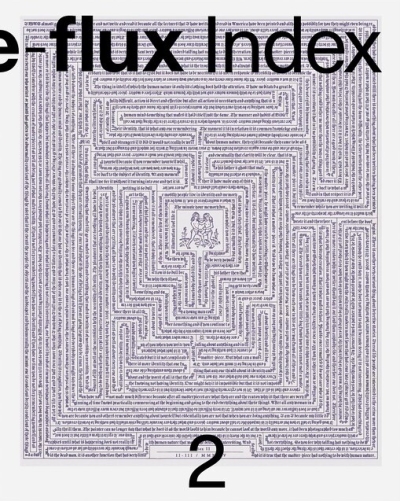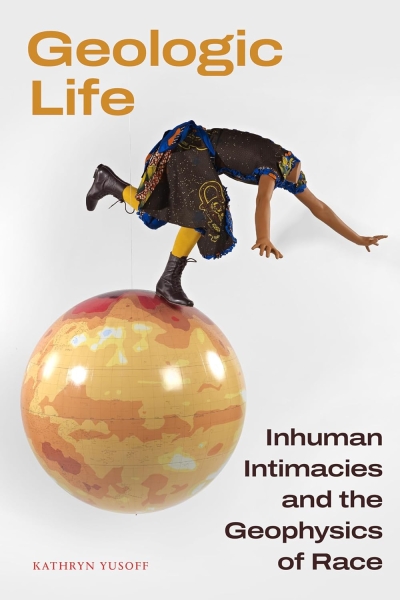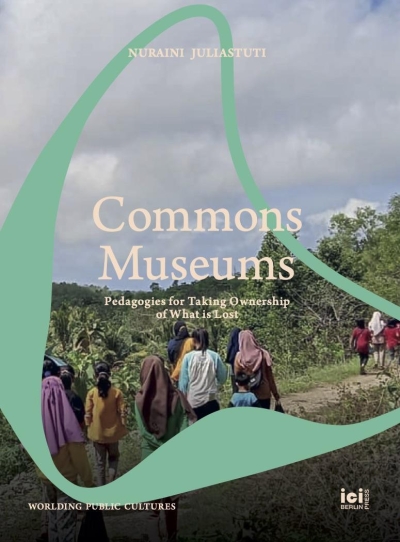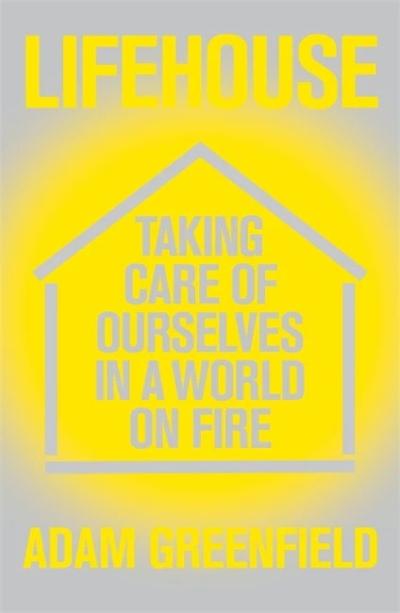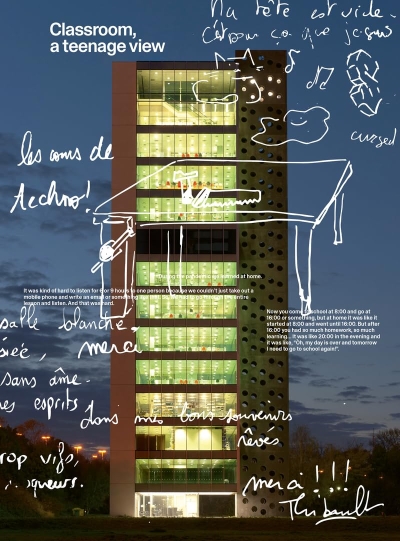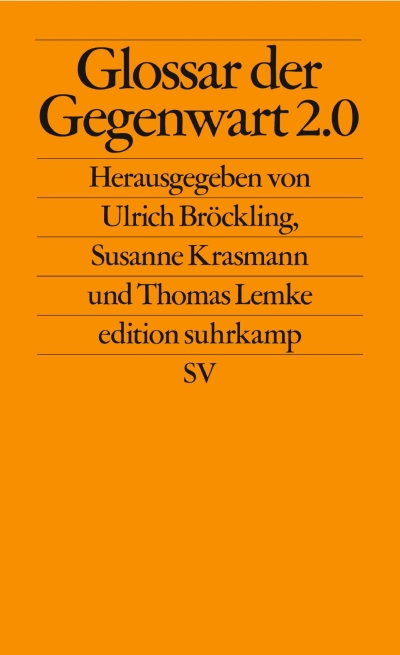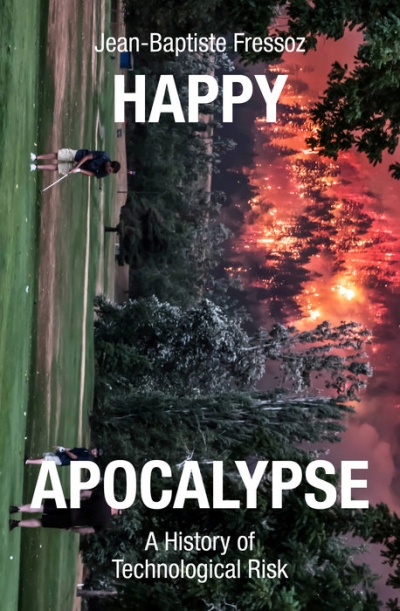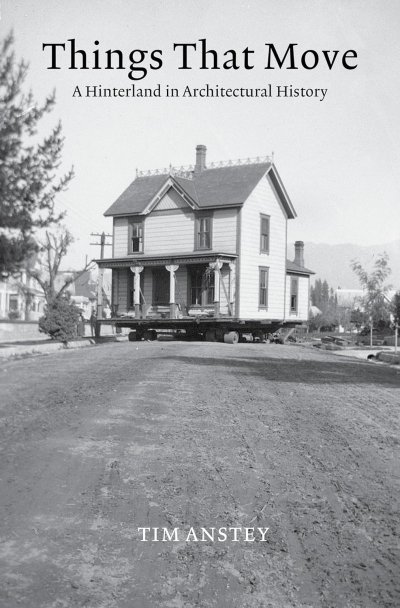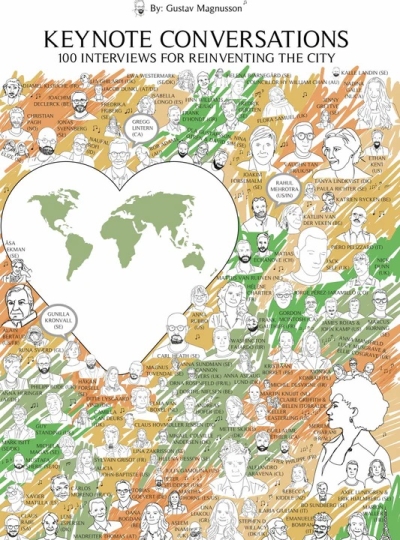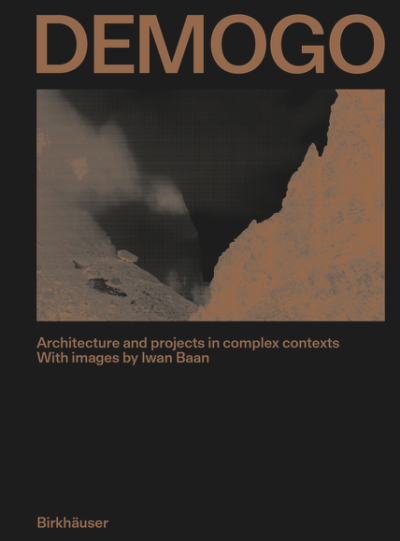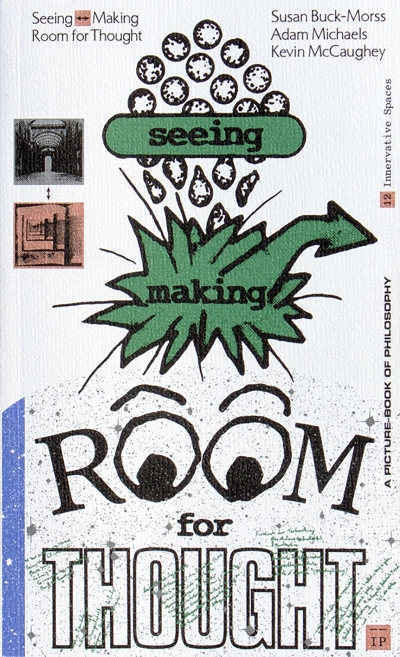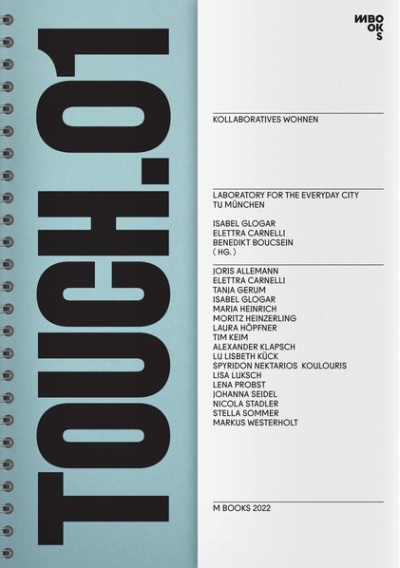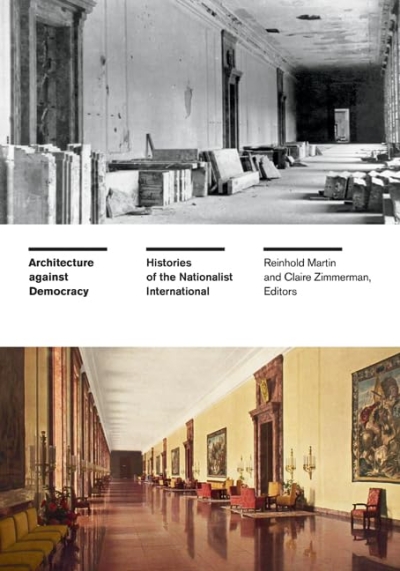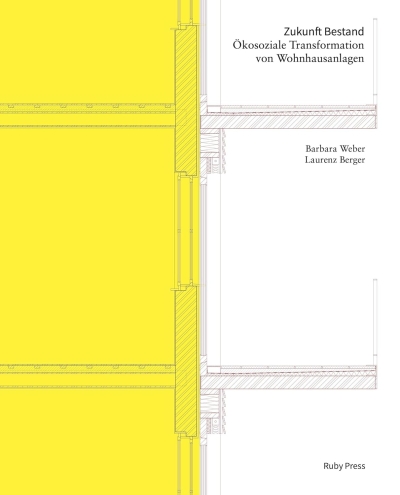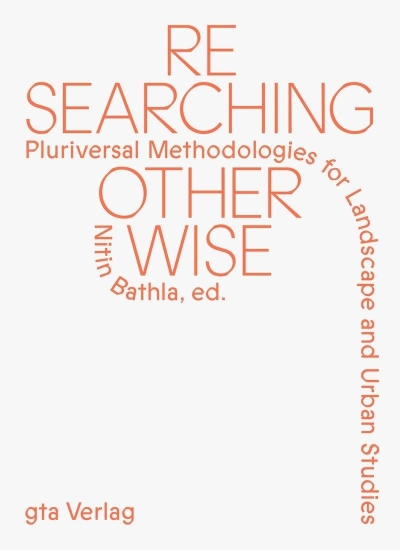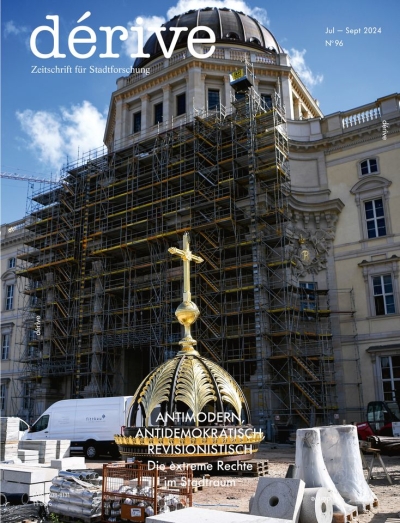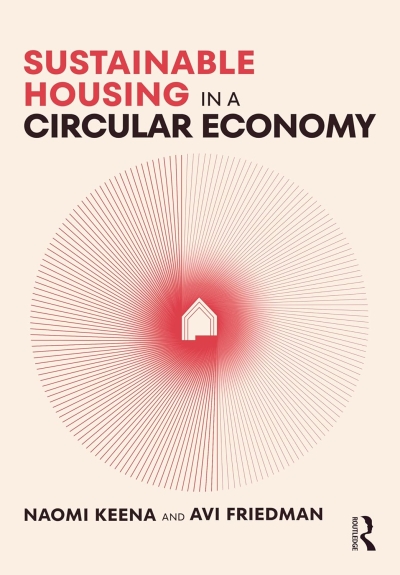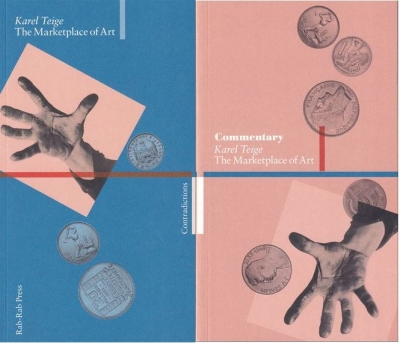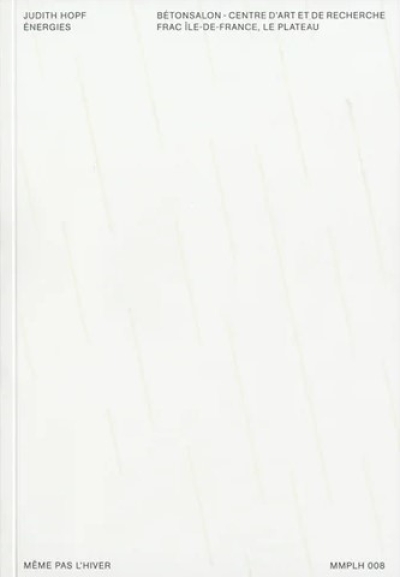e-flux
e-flux Index #2
gerade nicht auf Lager
Matteo Pasquinelli
Das Auge des Meisters. Eine Sozialgeschichte Künstlicher…
Kathryn Yusoff
Geologic Life. Inhuman Intimacies and the Geophysics of Race
Nuraini Juliastuti
Commons Museums. Pedagogies for Taking Ownership of What is…
Adam Greenfield
Lifehouse. Taking Care of Ourselves in a World on Fire
gerade nicht auf Lager
Moises Puente (Ed.)
Classroom, a teenage view
Ulrich Bröckling, Susanne Krasmann und…
Glossar der Gegenwart 2.0
gerade nicht auf Lager
Jean-Baptiste Fressoz
Happy Apocalypse. A History of Technological Risk
gerade nicht auf Lager
Tim Anstey
Things That Move. A Hinterland in Architectural History
Christophe Van Gerrewey
Something Completely Different. Architecture in Belgium
Alma d'Aigle
Ein Garten
Jens Balzer
After Woke
gerade nicht auf Lager
Gustav Magnusson
Keynote Conversations. 100 Interviews for Reinventing the…
gerade nicht auf Lager
DEMOGO studio di architettura
DEMOGO. Architecture and projects in complex contexts.
gerade nicht auf Lager
Susan Buck-Morss, Kevin McCaughey, Adam…
Seeing <—> Making. Room for Thought
Maurice Nio
The Suspense of Architecture. The Necessity to Shine
gerade nicht auf Lager
Labor für die alltägliche Stadt,…
TOUCH.01 Tactics of Urban Change.01 | Kollaboratives Wohnen
gerade nicht auf Lager
Reinhold Martin, Claire Zimmerman (eds…
Architecture against Democracy. Histories of the…
gerade nicht auf Lager
Anna Lowenhaupt Tsing, Jennifer Deger…
Field Guide to the Patchy Anthropocene. The New Nature
Marouane Ben Belfort, WIP Office
Nuykuln. Berlin's quarter and its Arab and Turkish…
Laurenz Berger, Barbara Weber
Zukunft Bestand. Ökosoziale Transformation von…
Nitin Bathla (Ed.)
Researching Otherwise. Pluriversal Methodologies for…
Carolin Genz, Olaf Schnur, Jürgen Aring…
WohnWissen. 100 Begriffe des Wohnens
gerade nicht auf Lager
Richard Evans
Listening to the Music the Machines Make. Inventing…
Anna Beckers, Gunther Teubner
Digitale Aktanten, Hybride, Schwärme. Drei Haftungsregime…
gerade nicht auf Lager
Justine Blau
Justine Blau. Veil of Nature
Eduarda Neves
Minor Bestiary. Time and Labyrinth in Contemporary Art
gerade nicht auf Lager
Kirsten Angermann, Hans-Rudolf Meier,…
Denkmal Postmoderne. Bestände einer (un)geliebten Epoche
gerade nicht auf Lager
dérive
dérive N° 96, Antimodern, antidemokratisch, revisionistisch…
Arch+ Zeitschrift für Architektur und…
Arch+ 256. Umbau. Ansätze der Transformation
Martino Gamper
100 Chairs in 100 Days and its 100 Ways
gerade nicht auf Lager
Olivia Broome
Brutalist Plants
gerade nicht auf Lager
Lucy Lippard
I See / You Mean. A Novel
Ruth Catlow, Penny Rafferty (eds.)
Radical Friends. Decentralised Autonomous Organisations and…
Loretta Napoleoni
Technocapitalism. The Rise of the New Robber Barons and the…
Ruth Buchanan, Fiona McGovern
Scores for Transformation (A conversation). Ruth Buchanan,…
Carey Jewitt, Sara Price
Digital Touch
Mark Coeckelbergh
Why AI Undermines Democracy and What To Do About It
gerade nicht auf Lager
Peter Godfrey-Smith
Metazoa. Die Geburt des Geistes aus dem Leben der Tiere
Fanny Chiarello
Basta Now. Women, Trans & Non-binary in Experimental…
gerade nicht auf Lager
&beyond collective for Theatrum…
Sonic Urbanism: Listening to Non-Human Life
gerade nicht auf Lager
Croatian Architects' Association
Designing in Coexistence - Reflections on Systemic Change
gerade nicht auf Lager
Anastasia Khodyreva, Elina Suoyrjö
Aquatic Encounters. A Glossary of Hydrofeminisms
gerade nicht auf Lager
Yancey Strickler, The Dark Forest…
The Dark Forest Anthology of the Internet
Alexander Kluge
Der Konjunktiv der Bilder. Meine Virtuelle Kamera (K.I.)
gerade nicht auf Lager
Sara Zeller, Evelyn Steiner (Hg.)
Design für Alle? Inklusive Gestaltung heute
Arturo Escobar, Michal Osterweil, Kriti…
Relationality. An Emergent Politics of Life Beyond the Human
gerade nicht auf Lager
Kim Dovey et. al.
Atlas of Informal Settlement. Understanding Self-Organized…
gerade nicht auf Lager
Claire Bishop
Disordered Attention. How We Look at Art and Performance…
gerade nicht auf Lager
Philip Widmann
Film Undone – Elements of a Latent Cinema
McKenzie Wark
Raven
gerade nicht auf Lager
Aruna D’Souza
Imperfect Solidarities
gerade nicht auf Lager
Gerry Leonidas (Ed.)
Designing type revivals. Handbook for a historical approach…
gerade nicht auf Lager
Jochen Becker, Anna Schäffler, Simon…
Glossar Urbane Praxis. Auf dem Weg zu einem Mannifest /…
gerade nicht auf Lager
Cyril Béghin (Ed.)
Chantal Akerman. Oeuvre écrite et parlée
Hansjörg Gadient
Spielraum. Kindergerechte Freiräume planen und bauen
Diamond Schmitt Architects
Set Pieces. Architecture for the Performing Arts in Fifteen…
Roberto Gargiani, ed.
Simple Architecture: Villa Baizeau in Carthage by Le…
gerade nicht auf Lager
Leonhard Laupichler, Sophia Brinkgerd (…
New Aesthetic 1. A Collection of Experimental and…
gerade nicht auf Lager
Martin Mosch
Die typografische Komposition
Vera Egbers, Christa Kamleithner, Özge…
Architectures of Colonialism
Anna-Maria Meister, Teresa Fankhänel,…
Are You a Model? On an Architectural Medium of Spatial…
Gilbert Simondon, Emmanuel Alloa (Hg.)
Imagination und Invention
Philipp Schönthaler
Wie rationale Maschinen romantisch wurden
Artemy Magun
The Temptation of Non-Being: Negativity in Aesthetics
Nicolas Uphaus
Frei. Selbstständig arbeiten als Designer (2. überarb.…
Anne Querrien, Brigitta Kuster (Hg.)
Maschinen | Gefüge | Karten
Sabine Nuss
Wessen Freiheit, welche Gleichheit? Das Versprechen einer…
gerade nicht auf Lager
Legacy Russell
Black Meme. A History of The Images That Make Us
Benjamin H. D. Buchloh, Hal Foster
Exit Interview. Benjamin Buchloh in conversation with Hal…
gerade nicht auf Lager
Gabriel Catren
Pleromatica, or Elsinore's Trance
You Can Sit With Us
You Can Sit With Us - 24/7
Johann Braun
Stadt von Rechts. Über Brennpunkte und Ordnungsversuche
gerade nicht auf Lager
Domitilla Dardi
Playgrounding. The playground as a symbolic form of society…
gerade nicht auf Lager
Paolo Pileri, Christina Renzoni, Paola…
Piazze Scolastiche / School squares. Reinventing the…
El Croquis
El Croquis 225. Macías Peredo. 2014 - 2024
Kim Förster
Building Institution. The Institute for Architecture and…
Michael Marder
The Phoenix Complex. A Philosophy of Nature
gerade nicht auf Lager
Florian Heilmeyer, Sandra Hofmeister
Umbau Architektur in Flandern. Architecture of…
Andrea Baier, Christa Müller, Karin…
Unterwegs in die Stadt der Zukunft. Urbane Gärten als Orte…
Paul Wood (ed.)
Biting the Hand. Traces of Resistance in the Art &…
gerade nicht auf Lager
Sezgin Boynik, Taneli Viitahuhta (eds.)
Free Jazz Communism. Archie Shepp-Bill Dixon Quartet at the…
gerade nicht auf Lager
Slavoj Žižek, Rastko Močnik, Zoja Skušek
Punk Suprematism. Theoretical Writings on Punk, Nation,…
gerade nicht auf Lager
Naomi Keena, Avi Friedman
Sustainable Housing in a Circular Economy
Karel Teige
The Marketplace of Art. 2 Volumes
Lukas Feireiss (ed.)
Parasite 2.0: Collective Keywords
Riccardo Badano, Tomas Percival, Susan…
Militant Media. Centre for Research Architecture 2
Exhibition Politics. Die documenta und die DDR
Karsten Krampitz
Pogrom im Scheunenviertel. Antisemitismus in der Weimarer…
Thomas Irmer
René Pollesch – Arbeit. Brecht. Cinema. Interviews und…
gerade nicht auf Lager
Işil Eğrikavuk
Global Protests Through Art. collaboration, co-creation,…
Felix Sommer, SB5ÜNF
Beton & Nicht Beton
Julia Schulz-Dornburg
The Complete Guide to Combat City
Dorothee Albrecht
Assemblages of the Future
gerade nicht auf Lager
Sam Ashby (ed.)
Little Joe: A book about queers and cinema, mostly
Jürg Graser, Astrid Staufer, Christian…
Architektur Klima Atlas. Klimabewusst entwerfen in…
gerade nicht auf Lager
Charlotte Malterre-Barthes
On Architecture and Greenwashing. The Political Economy of…
Judith Hopf
Judith Hopf. Énergies

